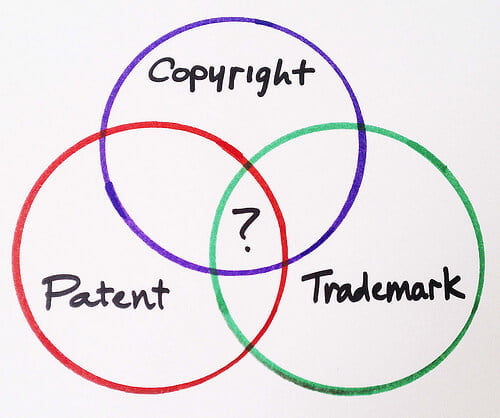Differences between IRDA and national trade marks
Are there any substantive differences in trademark practice and law between trademarks protected in Australia as international marks and national marks?
INTRODUCTION
International trademarks and brands that exist and trade in nations across the globe are becoming more prevalent. With the advent of the internet and the increasing ease of world travel and communication, it is not only the big brands of Coke and Nike that have intellectual property stakes dotted around the world, but now even relatively small traders are taking an interest in, and successfully at that, obtaining international trade mark rights and recognition. As Lockhart J has said, there is an “increasing and more instantaneous awareness [by consumers] of international commodities. This is an age of enormous commercial enterprises, some with budgets larger than sovereign states, who advertise their products by sophisticated means involving huge financial outlay.”[1]
Australian law accommodates such international trademarks. As a party to both the Paris Convention and the Madrid Protocol, there are many trademarks registered in Australia in the name of foreign owners. Under the Paris Convention[2] these marks are to be given the same protection in Australia as if they were an Australian-owned trade mark. However, there are still some differences in trade marks law and practice between an Australian mark and an international mark.
There are three types of international trade marks in Australia.
- International Registrations Designating Australia.
- Nationally filed, non-Madrid Protocol, international marks.
- Unregistered international marks.
This essay provides an overview of some of the differences between the above types of international trade marks and national trade marks.
INTERNATIONAL REGISTRATION DESIGNATING AUSTRALIA
The Madrid Protocol
One of the ways an international trade mark may be registered and protected in Australia is through the Madrid Protocol (the Protocol). The Protocol provides a system which allows trademark applications to be filed in multiple member countries, such as Australia, using a single (initial) trade mark application that is forwarded to a central agency. The central agency that handles the international applications is the International Bureau (IB) of the World Intellectual Property Organisation (WIPO). Currently, there are 76 parties to the treaty, including most[3] of Australia’s major trading partners.
In essence, the Protocol provides a simplified application system allowing numerous member countries to be easily selected and thereby saving fees and organisational mishaps. However, the applied for trade mark will still need to be accepted under the national laws of each selected country[4]. The Protocol does not provide, unlike the European Community’s central trade mark agency, for example, a system of central examination whereby acceptance would mean protection in all designated countries. Only the formalities, fees and classification will be examined by the IB.
Being a member of the Protocol, the system operates in Australia to allow Australian trade marks to designate other countries for protection, and conversely, to allow international registrations[5] designating Australia (IRDA). This is an important distinction. While there are subtle differences in trademarks law and practice between an incoming IRDA and an outgoing Australia trade mark designating other countries, both of which are applied for using the Madrid Protocol, the discussion below deals primarily with the differences between an IRDA and a simple, non-Madrid, Australian trade mark application.
Same Protection
All parties to the Madrid Protocol, including Australia, are parties to the Paris Convention (the Convention) and so similarly to any mark foreign mark registered in Australia regardless of the process used, when an IRDA is registered it is afforded the same protection as an Australian national mark. That is, once registered, an IRDA becomes a protected international trade mark[6].
Examination
An IRDA must undergo the same examination and opposition processes as a national application filed directly with IP Australia. The same grounds for rejection found under sections 39 through to 44 of the Trade Marks Act 1995 (the Act) apply to an IRDA (see Reg 17A.28), in addition to refusal based on a lack of translation of foreign words, classification issues and the requirement for the Australian Competition and Consumer Commission (ACCC) to approve certification marks. If grounds for rejection are found, a provisional refusal is issued and this is equivalent to the Examiner’s first adverse report for a national application.
However, the operation of any refusal/rejection by IP Australia, and date from which it must be overcome, is different for a national application and an IRDA. A national application will be registered if the Registrar is satisfied that the application has been made in accordance with the Act, that there are no grounds for rejecting it[7] and no successful opposition has been filed. If an objection is raised by the Examiner, the owner has 15 months (extendible) from the date of the adverse report in which to overcome the objection, and if this is not achieved the application lapses[8]. However, the Madrid Protocol has no provisions for lapsing. Under the Madrid system, IP Australia has the right to notify to the IB of provisional refusal or the possibility of an opposition within 18 months[9] from the date when the IB notified Australia of the IRDA, but if this does not occur, full protection is afforded to the IRDA[10].
Basic Application
Unlike a nationally filed mark, an IRDA must be based on an application(s)[11] or registration(s) in a fellow Protocol country where the applicant resides, is a national of, or has a business in. This application is referred to as the basic application. The international application must be for exactly the same trade mark, have the same owner and cover the same, or some only, of the goods and/or services as the basic application.
Furthermore, the IRDA is dependent on the basic trade mark for 5 years after the filing of the IRDA. If the basic trade mark ceases to exist or its scope is restricted within the 5 years period of dependency then the corresponding Madrid application is cancelled or limited to the same extent[12]. It is important, therefore, for holders of an IRDA to be careful that their basic trade mark is kept alive and to overcome as far as possible any objections or oppositions that might arise in order to protected their dependent IRDA.
If the basic application or trade mark is cancelled the holder can “transform” the IRDA into an independent Australian trade mark application (and also for the other designated countries) if filed within three months of cancellation if the IRDA and still claim the same priority date of the IRDA[13]. Even if the three months has expired, there nothing preventing the holder from filing an independent Australian application, though the priority date of the IRDA will be lost. Such an application, whether made subsequent to an IRDA or not, will be exactly the same as a national application in that it is not dependent on an overseas basic trade mark.
Priority Date
The priority dates of an IRDA and a nationally filed application are determined differently. The priority date for a nationally filed application, whether that of a foreign owner or not, will be the date in which IP Australia receives the application (so long as the minimum required information[14] and fees are supplied). Under the Paris Convention, if an international application, such as an IRDA, is filed in Australia within six months of a first filed national application, it may claim a priority date in Australia of the first filed national application, so long as it covers the same mark and same goods and/or services. That is, the priority date in Australia of an IRDA will be not the date on which IP Australia was first informed of the international application, but rather the date on which the international application was first filed in the other Convention country. The effect of this provision can be that an international mark yet to be applied for in Australia can end up with an earlier priority date of an already applied for mark in Australia, though not more than six months. This provision applies in reverse for Australian marks filed internationally and is a great advantage to local clients.
Not all IRDAs can claim priority. For example, a mark may have been registered in the United States for many years and when applied for in Australia by way of IRDA it will not be possible to claim priority based on the mark which has been registered for more than six months.
Terms and Fees
The term of renewal for an International Registration is at 10 year intervals from the date of the International Registration, which is usually the date on which the international application was received by the office of origin. The renewal fee for and IRDA will be less than 10 years after Australia is designated if Australia was designated sometime after the basic application. Fees can be paid 6 months prior and 6 months post (the 6 month grace period) to the due date. For a national application, the renewal is due at 10 year intervals from the original filing date of the application[15] and the fees can be paid 12 months prior and, similarly to an IRDA, 6 months[16] from the date of expiry[17]. The international application fee for an IRDA consist of a basic fee (653 Swiss francs), a complementary fee (100 Swiss francs) for each designated country that does not require an individual fee (Australia does; 356 Swiss francs[18]) and a supplementary (100 Swiss francs) fee for each class of goods and services over three classes. Australian filing fees are $120 per class, if applied for online. Whether or not it is cheaper to file using the Madrid system or directly in each desired country depends on how many and which countries are selected.
Series, Scent and Defensive Marks
Under the Madrid Protocol system there is no provision for series, scent or defensive trade marks. If an international applicant wishes to pursue protection for these types of marks, they should file a non-Madrid Australian application (which may still claim priority from a corresponding international trade mark/application).
Divisional Trade Marks
It is not possible to file an Australian divisional application from an International Registration Designating Australia (IRDA)[19].
Certification and Collective Marks
Collective, certification and guarantee[20] marks can be claimed under the Madrid Protocol. However, the Protocol provides no definitions of these marks which can have different meanings or requirements under the national laws of different countries. In Australia, the requirements for an IRDA claiming to be a collective or certification (or guarantee) mark is the same as for a national application[21]. So in the case of a certification mark, the ACCC will still need to review and consent to the rules governing the certification mark.
Upon receiving an IRDA claiming to be a collective or certification mark, IP Australia will issue a full provisional refusal together with a request for the marks’s rules (for certification marks only), and attached is a copy of the IP Australia brochure Certification, Collectiveand Guarantee Trade Marks.
Classification of Goods and/or Services
As with national applications, an IRDA must abide by the Nice Classification system. The difference procedurally between an IRDA and a national application is that the IB has already checked that the goods and/or services of the international registration are in their right classes before it comes to IP Australia. Furthermore, IP Australia cannot override the classification given by the IB[22]. IP Australia does, however, examine the goods and/or services as it would a national application and can object to claims that are too vague, incomprehensible or which are otherwise not acceptable under Australian law.
Other Minor Differences
There are many other minor differences, particularly procedural differences, between an IRDA and a simple national application, some of which are pointed out below:
- Translation of foreign words is required for a national application, but only if requested for an IRDA;
- Amendments to International Registrations, such as change of address, can only be requested by the holder and must be made directly to the IB[23];
- In addition to the information normally entered into the IP Australia database for national applications, the International Registration number, the date IP Australia was notified of the IRDA and the date the International Registration is due for renewal are also recorded; and
- Notification procedures in the case of oppositions to IRDA are slightly different. The usual three months (extendible) in which to serve evidence in support of an opposition does not apply to an opposed IRDA unless, within three months of the Notice of Opposition being filed the holder has notified the Registrar, in writing, of its address for service in Australia.
Nationally filed, non-Madrid, international marks
The Madrid Protocol and its corresponding Australian legal mechanisms are not the only means of seeking registration of a foreign mark in Australia. In the same manner as a local trade mark applicant would, a foreign applicant, including those from Madrid countries, can apply to register a trade mark in Australia by submitting a national application. Indeed, for a non-Madrid country, such as Thailand, applying for a trade mark this way is the only option. Filing using the local application processes may also be useful for foreign applicants wanting an Australian series, scent or defensive mark (which cannot be applied for under the Protocol), or for foreign applicants who are only interested in Australia and one or two other countries (which would likely save fees).
The application process for non-Madrid foreign applications and national applications is virtually identically to national applications and, once registered, the protection afforded to the foreign mark is the same as that of an Australian mark. This is in line with Australia’s obligations under the Paris Convention and the TRIPS agreement. The difference between an Australian national application and a non-Madrid international application in Australia is that the later may claim priority from a trade mark or application filed in another Convention country within 6 months of the Australian application; TMA s29.
UNREGISTERED INTERNATIONAL TRADEMARKS
Trade marks existed in Australia prior to the establishment of the Australian trade mark registration scheme, and there still remains a lot of protection under common law and legislative provisions for unregistered trademarks. For an unregistered mark to receive any kind of protection in Australia, it is essential that it have some amount of reputation or be “well known”,in Australia. In the past, it has been difficult for foreign entities with no actual sales or physical presence in Australia to prove such reputation, but recent cases have placed less emphasis on this, and now, it is not necessary for a foreign plaintiff to have an actual place of business in Australia or to have sold their goods/services in Australia.
By way of background, protection for unregistered trade marks arise from the Trade Practices Act 1974 (hereafter “TPA”)[24] and the law of passing off. Under section 52 of the TPA, an entity is prohibited from engaging in conduct which would be deemed as misleading or deceptive or likely to mislead or deceive. The common law tort of passing off has similar operation but is slightly more onerous in its requirements[25]. It is worth noting that these laws are equally applicable to both registered and unregistered trademarks.
As stated, a foreign entity would previously have had to prove a physical presence or sales in Australia for a TPA or passing-off action. However, the leading case of ConAgra Inc v McCain Foods (Aust) Pty Ltd (1992) 23 IPR 193 held that the true test of reputation is whether a substantial number of persons of the relevant target market in Australia would be aware of the foreign entity’s mark. This type of foreign entity reputation outlined in the ConAgra case is often referred to as “spillover reputation”. Mr Justice Lockhart stated that:
“it is no longer valid, if it ever was, to speak of a business having goodwill or reputation only where the business is carried on. Modern mass advertising through television (which reaches by satellite every corner of the globe instantaneously, radio, newspapers and magazines, reaches people in many countries of the word….Goods and services are often preceded by their reputation abroad.”
It appears, therefore, that there is now very little difference between the elements involved in national mark or a foreign mark with no actual place of business or sales in Australia availing itself to the protection of the TPA or passing of action. Both may be successful by proving a requisite reputation. Perhaps the difference, if any, is a practical one. It is a complex and often difficult task for an overseas party without large sales in Australia to collate sufficient evidence, often by way of survey evidence to demonstrate sufficient “spillover” reputation.
Finally, it should be noted that Australia also protects “well known” marks, a full discussion of which is beyond the scope of this essay. Well known marks are protected primarily under s120 of the TMA. This provision only applies to registered marks, and despite being implemented largely to fulfil Australia’s treaty obligations (Paris Convention 6 bis and TRIPS Article 16), it applies in the same manner to foreign marks as it does to Australian marks.
Conclusion
By and large, trade mark law and practice for a national mark and an international mark in Australia is the same. We protect international marks as if they were our own. However, there are some substantive differences existing between national and international marks. In particular, there are many differences between a nationally filed mark and an IRDA such as the reliance on a basic application, the determination of the priority date, the examination process and the inability to file for certain types of marks when filing an IRDA. It is important that attorneys and their international clients are aware of such differences.
References
[1] ConAgra Inc. v. McCain Foods (Aust) Pty Ltd (1991) 22 IPR 175 at 233.
[2] Article 2(1)
[3] Notable exceptions being Canada and some Asia nations. New Zealand is expected to be a party shortly.
[4] However, by virtue of WIPO, international treaties, cooperation and trade, it should be noted that the trade mark law in many member countries is becoming increasingly analogous.
[5] “Registration” in the context of an IRDA does not mean a protected trade mark registration as it would in Australian terminology, but merely an international application.
[6] Trade Mark Regulations 1995 (the Regulations) Regs 17A.36 & 17A.39; the Protocol Art 4; the Convention Art 2
[7] TMA section 33(1)
[8] TMA section 37(1)
[9] Under Article 5 of the Protocol this could be 12 or 18 months; Australia has elected 18 months.
[10] Reg 17A.36
[11] The international application can be based on more than one basic application or registration covering different goods/services, so long as the trade mark is the same.
[12] Common Regulations, Rule 22
[13] Protocol Article 9; Regulation 17A Division 7.
[14] See Regulation 4.2
[15] TMA section 72 & 77
[16] This applies to trade marks with a date of expiry after 28 March 2008.
[17] Reg 21.28
[18] At time of writing
[19] Though the converse is not true; Australian applications that act as a basic trade mark for an international Madrid application may have a divisional application filed for some of the goods and/or services. However, in this situation the IB will need to be notified.
[20] Similar to certification marks.
[21] Reg 17.A49 (Collective marks) and Reg 17.A50 (Certification marks). For Australian requirements, see Part 33 of the TMO Manual and Part 15 TMA for collective marks and Part 35 of the TMO Manual and Part 16 TMA for collective marks.
[22] The Protocol, Article 3(2)
[23] The Protocol, Article 9 and 9bis
[24] Similar provisions exist in the various state Fair Trading Acts.
[25] In that it requires actual damage to have occurred.






